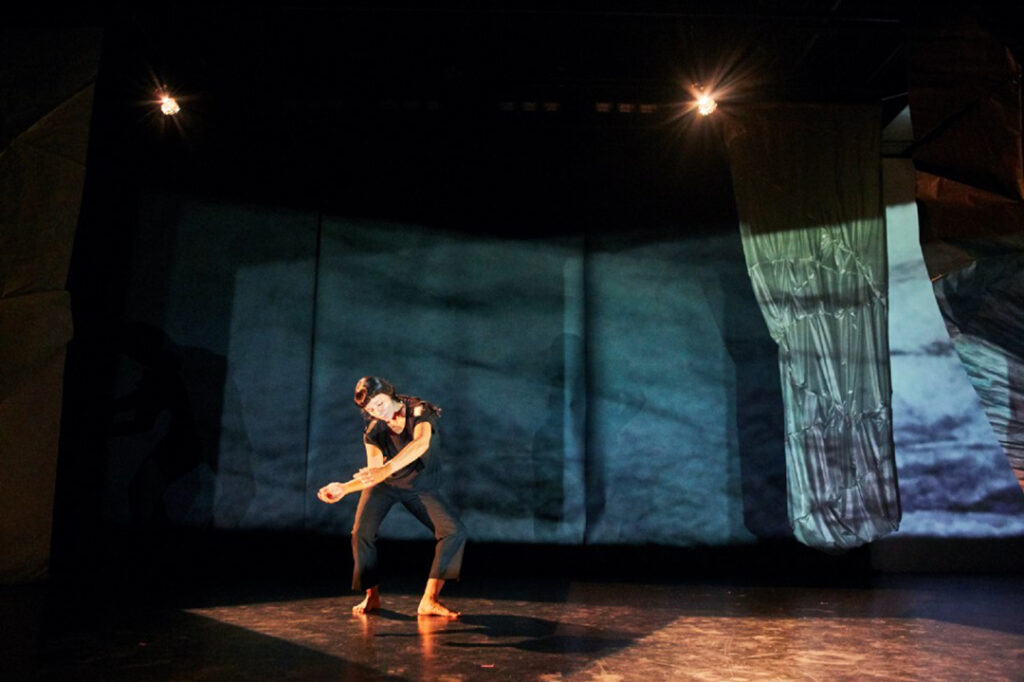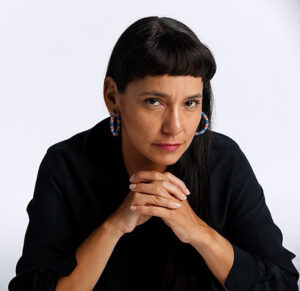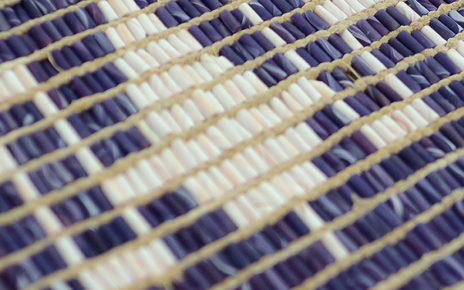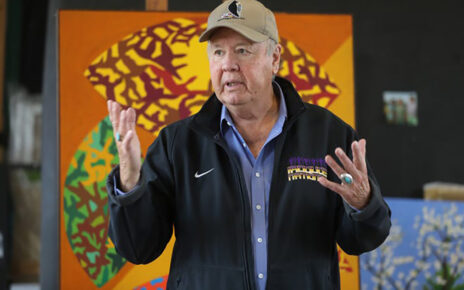Tony Duncan, Rosy Simas, and Qacung Yufrican
By Lulani Arquette | Dance/USA Fellowships to Artists | Dec 1, 2020
Editor’s Note: A more accessible version of this article for low-vision readers can be found on Dance/USA’s From the Green Room. This article is one of 11 in a series examining the creative work of 31 dance artists funded by Dance/USA Fellowship to Artists, generously supported by the Doris Duke Charitable Foundation. These artists’ practices are embedded in social change as they work in multiple dance forms in communities across the country.
For Native dancers, the physical body is not only their central instrument for expression, it is the literal vessel of their ancestral genealogy, coded in their DNA. When the body is mobilized through specific movement, song, and dance to carry that history and those stories forward, both performers and viewers are enlivened. Put simply, we feel belonging and connection.
Native dance helps us to tell our stories and express appreciation for all of our blessings. Ritual and protocol help inspire the spirit, and allow us to give thanks for the bounty of nature and the Gods, or honor an ancestor — human or animal. Whether on the Arizona desert near Salt River, the urban streets of Minneapolis, the frozen tundra of Alaska, in numerous geographies across the nation or internationally, these artists perform, choreograph, and teach to keep their cultures alive.

As multi-disciplinary artists, Tony Duncan, Rosy Simas, and Qacung Yufrican (aka Stephen Blanchett) practice in various genres of dance, music, and performative presentation. Each has chosen a distinct path to activate cultural truth and social justice. All are committed to life-long learning and disciplined research related to their artistic practice. They share the value of mentoring and working with others, whether with youths, members of their families and communities, or other artists during co-creation. All three express interest in how their performing and teaching can address needed healing for their respective communities and audiences.
A Native mindset is not driven by western concepts of time. This shift in sensory perception lets one’s senses intermingle — hearing the movement, seeing the sound, feeling the story.
ROSY SIMAS
Simas’s Seneca Nation dances and traditional ceremonies are not for public viewing. For her, cultural responsibility is important and complicated. She refers to herself as a contemporary dancemaker who does abstract work; she avoids creating pieces that feed a desire for recognizable Indigenous signifiers — costumes, images, texts — so the audience understands it as Native. Simas has established her own protocol of asking permission and interacting with her home community, as she feels a responsibility to her ancestors, family, and her practice.
She spoke about the waves of settler colonialism that happened, east to west, in North America. Coming from a northeast tribe, she reflects on the treaty negotiations and interactions with the Dutch colonists: “Our diplomacy goes far back …. We have centuries of protocol. Seneca historically have been very intentional in not sharing sensitive information with outside people.”

This Haudenosaunee history sparks her activism. Simas tells me her creative process includes research into her culture and community. Her current work contemplates healing and grieving and is inspired by the philosophy of the Great Law of Peace, which brought together the Iroquois Confederacy. In 2019, she travelled back east to attend a reading of the Great Law. That physical act of being present greatly affected her new work.
For many Indigenous artists, creative discipline derives from a deep-seated commitment to their cultures and communities.
Simas is uninterested in commodifying her work to imbue learning or pure consumption so that funders, presenters, or audiences can check off a “Native box.” She creates intentional environments and hopes audiences will commit to being in that space together, even if they don’t quite understand what they are experiencing. Her performances often include movement, sculpture, sound, and film, and intermingle performance with audiences, both indoors and outdoors. The 2019 piece WEave:HERE was a 60-minute processional performance that traversed two blocks down the Native Cultural Corridor in Minneapolis into installations by Ojibwe artists Heid E. Erdrich and Jonathan Thunder.
Her work provokes viewers to pay attention, a rarity in these times. As a practicing meditator, I would describe it as being coaxed into a Zen-like state or Native mindset that is not driven by western concepts of time. This shift in sensory perception lets one’s senses intermingle — hearing the movement, seeing the sound, feeling the story.
RECIPROCITY AND CONNECTIONS TO LINEAGE
In most Indigenous cultures, artists feel an intrinsic responsibility for what they do, whether they work in disciplines rooted in cultural practice; new evolutions of that cultural dance, like Duncan and Yufrican; or new frontiers in performance and choreography, like Simas. For these three artists, creative discipline derives from a deep-seated commitment to their cultures and communities.
We all strive to understand what came before us — our ancestry and familial heritage. Reclaiming our culture and language in modern times is an act of decolonization and Indigenous resilience in the face of a difficult past. What distinguishes Native artists in the United States is our diversity and this unique history of settler colonialism and theft of homelands that have rendered multigenerational scars. With that constant pull to return “home” to that which is safe and familiar, if not literally, at least in our minds, we acknowledge a greater cosmic order that values reciprocal relationships and the interconnectivity of all things.
Reclaiming our culture and language in modern times is an act of decolonization and Indigenous resilience in the face of a difficult past.
Rosy’s work with her Seneca community ties her to a sense of peacemaking, diplomacy, and reciprocity. She explained that her people practice living in balance with the natural world — not taking more than they need. I can’t help thinking how important finding balance is in these chaotic and polarized times.
Please visit the artists’ websites: Tony Duncan, Rosy Simas, and Qacung Yufrican for more information about them. Rosy’s website is as follows: https://www.rosysimas.com/
For the full article:
https://medium.com/dance-usa-fellowships-to-artists/native-dance-now-body-and-spirit-c6fcc3267ccb
(Due to space constraints, we only included the section about Rosy Simas)




